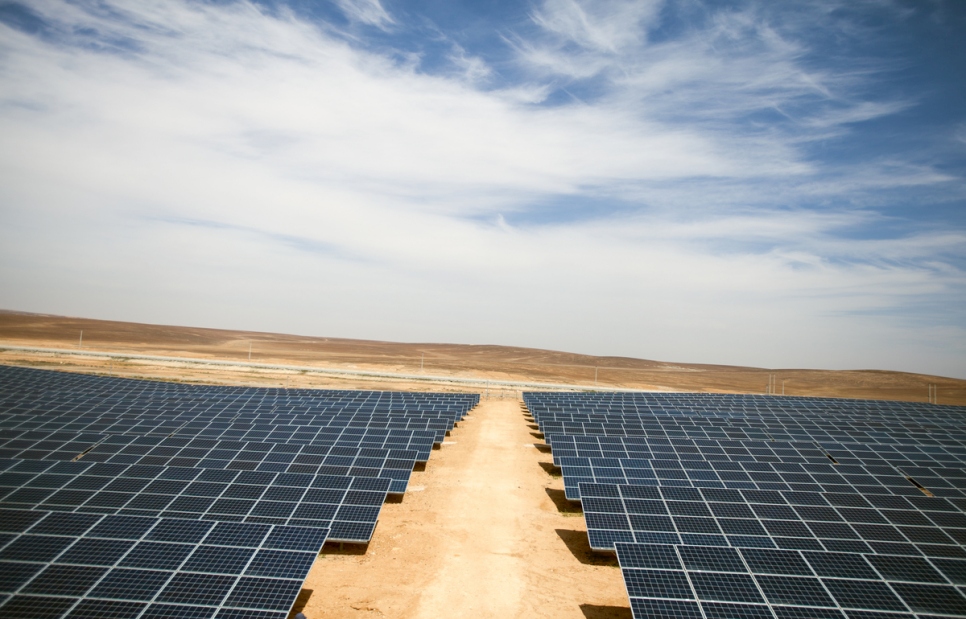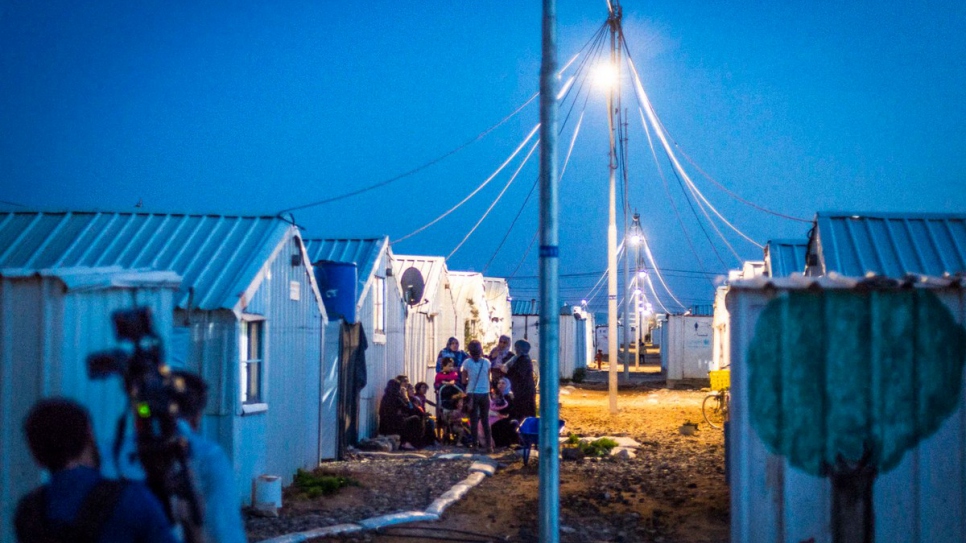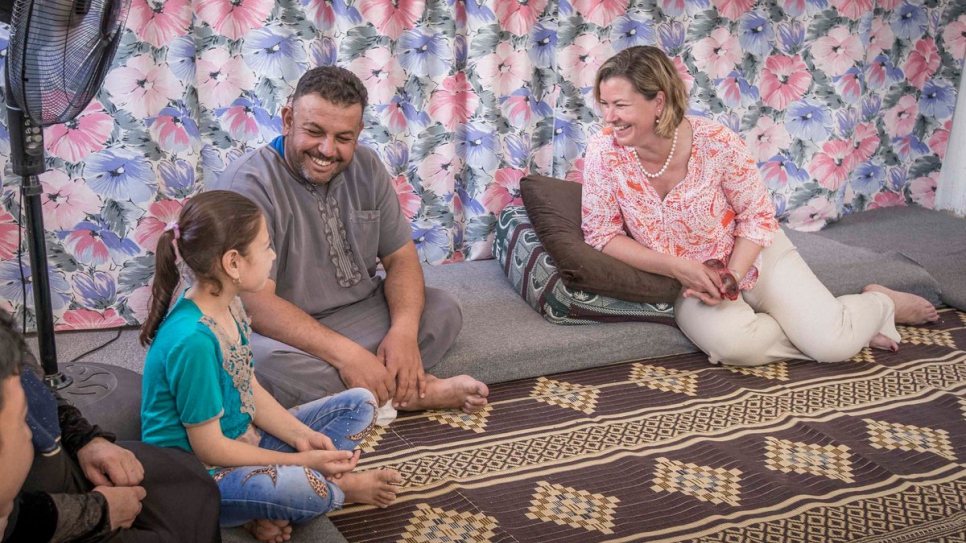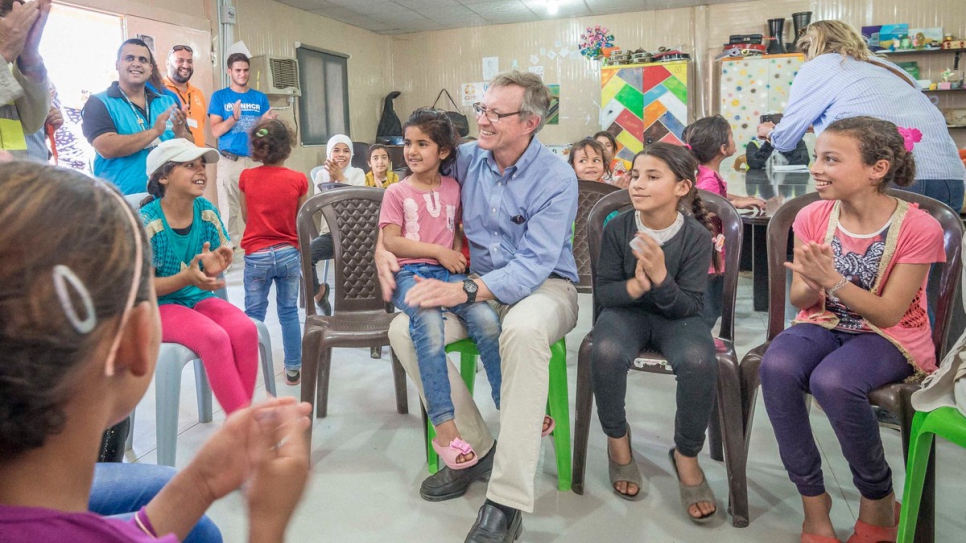
Thousands of Syrian families will light up their homes, charge their phones and chill their food by solar power tonight, as Jordan’s Azraq camp becomes the first refugee camp in the world to be powered by renewable energy.
UNHCR, the UN Refugee Agency, has switched on Azraq’s new two-megawatt solar photovoltaic plant on. It will provide clean energy free of charge to some 20,000 Syrian refugees living in shelters that have been linked up to the electricity grid since January. The grid is due to be expanded to all 36,000 refugees currently residing in the camp by early next year.
The plant was built at a cost of €8.75 million (US$9.6 million), funded entirely by the IKEA Foundation’s “Brighter Lives for Refugees” campaign. It will result in immediate energy savings of US$1.5 million a year – which UNHCR will be able to reinvest in other much-needed assistance – as well as annual CO2 emissions savings of 2,370 tons.
Electrification will transform the lives of Syrian refugees living in the harsh environment of the camp, located in Jordan’s barren northern desert. For the past two and a half years, Azraq’s residents were reliant on portable solar lanterns to light their homes, and had no reliable means of preserving food or cooling their shelters in the extreme desert heat. The introduction of electricity earlier this year improved their daily lives.
“Today marks a milestone… it allows all residents of the camps to lead more dignified lives.”
Fatima, a 52-year-old single mother from rural Damascus, has lived in the camp since 2015 with her two adult sons. She described the practical and psychological benefits that electricity has brought to the camp and its residents.
“In Syria we were used to a particular lifestyle, and then we were disconnected from it when we became refugees,” she said. “For someone who is used to having electricity, you cannot imagine how difficult it is to live without it.”
Fatima and her two sons have already invested in a second-hand fridge, washing machine and electric fans, which they share between their three shelters.
“Before this, when we cooked a meal we had to throw the leftovers away because there was no safe way to store food,” Fatima explained. “When we got too hot, we had to pour water on our clothes to keep cool. Now we can listen to music or have a cold glass of water, and daily life no longer ends when the sun sets.”
The construction of the solar plant has also provided welcome income and training to more than 50 refugees in the camp, who were employed under the supervision of Jordanian solar company Mustakbal to help build the plant.
“The construction of the solar plant is a remarkable example of cooperation between a host government, a private organization, and UNHCR.”
Mohammad, 20, is from the Damascus suburb of Ghouta, and came to the camp in May 2014 a month after it opened. He had been forced to leave school with no qualifications aged 14, following the outbreak of Syria’s conflict which is now in its seventh year.
Having previously received some metalwork training in the camp, Mohammad was one of those chosen to build the frames that support the solar panels, as well as installing the plant’s electrical circuits. As a result, he says he gained new skills that have already helped him find occasional work outside the camp.


At last, Syrian refugees can enjoy the evening outside their shelters. © UNHCR/Benoit Almeras Martino
“I wasn’t able to finish my education because of the war and then exile, but this has given me a practical skill that I can hopefully use in the future,” Mohammad said. “If we return to Syria, the infrastructure is all destroyed, but this is a technology that we could use to rebuild.”
Azraq’s solar plant is connected to Jordan’s national grid, meaning that any unused electricity generated can be fed back into the network at no cost, supporting the energy needs of the host community.
“Today marks a milestone,” said Kelly T. Clements, UNHCR Deputy High Commissioner, who visited Azraq on Wednesday.
“Lighting up the camp is not only a symbolic achievement; it provides a safer environment for all camp residents, opens up livelihoods opportunities, and gives children the chance to study after dark. Above all, it allows all residents of the camps to lead more dignified lives,” she added.

UNHCR’s Kelly T. Clements chats with a Syrian father and his daughter. © UNHCR/Benoit Almeras Martino
“The construction of the solar plant is a remarkable example of cooperation between a host government, a private organization, and UNHCR,” said UNHCR’s Representative for Jordan, Stefano Severe.
“Through the generous support of the IKEA Foundation and with the collaboration of the Government of Jordan, we can not only address the immediate electricity requirements of refugees living in Azraq, but we can also support the longer-term energy needs of refugees and the Jordanian host communities.”


